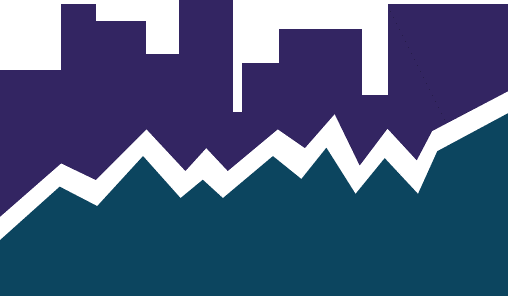The Monday Morning Quarterback
A quick analysis of important economic data released over the last week
By Elliot D. Pollack & Co. | Rose Law Group Reporter
An interesting set of data came out from the U.S. Census regarding net migration patterns across the U.S. The data is from 2019 before the pandemic, but it shows that Arizona was one of the top states for migration from another state for persons 25 years and older. Arizona’s total of 62,441 persons migrating to the state ranked third behind Florida (131,764 persons) and Texas (66,628 persons). North Carolina (39,467) and South Carolina (31,355) rounded out the top five states. The states with the largest loss of persons 25 years and older include New York (-134,374), California (-112,593), Illinois (-67,599) and New Jersey (-43,759). So even before the pandemic, there was a significant shift in population from the largest, most densely populated states to the Sun Belt. Based on what we have seen in the housing market over the past year, that shift has probably accelerated.
What is even more telling is the net migration of persons with bachelor’s or graduate degrees. Arizona falls to a respectable sixth in this category with 18,754 persons. Florida and Texas lead once again with 49,043 and 31,362 persons respectively followed by North Carolina (26,428), Colorado (25,894), and Washington (20,010). The big losers are the same as mentioned before: New York (-56,361), Illinois (-25,520), California (-24,153), and New Jersey (-20,890).
Where Arizona falls short is the percentage of persons with bachelor’s or graduate degrees out of the total net migration. Only 30% of the persons migrating to Arizona have a bachelor’s degree or higher. In Colorado and Washington, the Census estimate is 85% and in North Carolina it is 67%. Continuing to promote higher skilled jobs in Arizona will help to improve these numbers.
These are telling figures that point to a brain drain from parts of the East and West Coasts and Midwest to the states where there are more favorable tax structures, established high tech industries, and quality educational institutions that support a 21st Century economy. Arizona’s economic development organizations and universities have worked hard to place the state at the top of the list for innovation and a pro-business climate. The announcements for the Taiwan Semiconductor Manufacturing Company’s plant in Phoenix and the expansion of the Intel semiconductor plant in Chandler are examples of how the Greater Phoenix area is positioned for growth in the future. Over time, this will allow the state to retain many of its graduates coming out of the universities rather than seeing them leave to work elsewhere.
U.S. Snapshot:
- The official population count from the 2020 Census was released last week. The U.S. population on April 1st, 2020, was 331,449,281. That is an increase of 22,703,743 or 7.4% (the slowest rate of growth since the Great Depression) from the 2010 Census count. The biggest net gain was in Texas and the highest growth rate was in Utah.
- U.S. Real GDP grew at an annualized growth rate of 6.4%. Consumer spending led the way in growth, with an increase of 10.7% compared to 2.3% from last quarter. Consumer spending account for 68.2% of the economic activity.
- Personal income increased by more than $4 trillion or 21.1%, in March. The combination of the fiscal stimulus and the economy opening up at the same time is creating huge economic growth. Personal consumer expenditures were up 11.0% and the savings rate pushed upward to 27.6% for the month.
- U.S. consumer confidence increased to a 14-month high of 121.7 in April. The increase in vaccinations and the fiscal stimulus allowed more services to reopen and increase hiring. Consumer sentiment did not match the gains achieved by consumer confidence. But it did move in the same direction. Consumer sentiment increased 4.0% from a month ago and 23% from a year ago.
- The homeownership rate increased to 65.6% from a year ago in the first quarter of 2021. The number of occupied housing units increased 1.2% from a year ago.
Arizona Snapshot:
- Arizona added 766,906 residents, according to the U.S. 2020 Census count. The April 1st population was 7,158,923, up 12% from 2010.
- Monthly lodging activity increased in Arizona. March’s occupancy level reached 68.8%, an increase of 43.8% and while demand saw an increase of 43.2% for the month. Quarterly, the state’s major metros continue to recover. The occupancy level in Greater Phoenix was 59.5% and 52.5% in Greater Tucson.
- Airport traffic increased year-over-year for the first time since the pandemic began in March. Enplaned traffic increased 21.0% and Deplaned traffic grew by 29.6% over the year. Year-to-date total activity in the airport is still down 35.3%.
- The first-quarter homeownership rate in Arizona was 64.5%, Greater Phoenix 66.1% and Greater Tucson was 60.7%, according to the latest data from Census.












